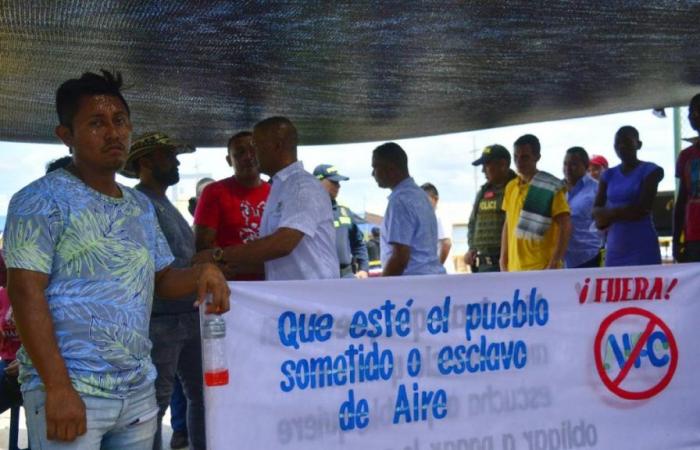
For the leaders of the protest against the poor provision of energy service in the municipalities of Uribia and Manaure, in La Guajira, key territories for the country’s energy transition, The definitive solution to this problem is in the medium and long term, despite the agreements reachedthey are not convinced that there is the will to comply with them.
Here we see Colombia’s goals delayed. What’s more, in the last game when James made the pass, the power went out and we heard the goal on the radio
This was expressed by Hernán Jaramillo, one of the leaders, who described the difficult panorama that these two Guajiro populations, mostly Wayú indigenous people, are experiencingon behalf of the constant fluctuations in energy which are recorded every three minutes and service interruptions. The losses of appliances and non-perishable foods are in the millions.
“Here we see Colombia’s goals delayed. What’s more, in the last game when James made the pass, the power went out and we heard the goal on the radio,” he says, laughing, but with a voice of concern because he assures that they are facing a clear violation of their rights and a great impact. to the quality of life of the inhabitants of these two municipalities.
It’s a bittersweet victory
Some points were agreed upon for the lifting of the protest, but Jaramillo says it is a “bittersweet victory.” “What they are proposing to us is just a patchwork of water, because there has been no planning or coordination with the territorial entities in this problem,” he says.
This problem, which has been going on for 20 years, according to the leader, has worsened for many reasons, one of which is Venezuelan migration, which is mostly found in an invasion sector where there are seven neighborhoods, with about 16 thousand people, abnormally connected to the power lines.
“We also have about 20 salt mills that have no license, no environmental permit, much less standardized electrical connections,” he explained.
He says that, because of this, they also suffer with the water service, since the aqueduct and deep wells work with electric submersible pumps that have burned out due to power outages; and that in the hospital there are three burned floors for the same reason.
We also have about 20 salt mills that do not have a license, nor an environmental permit, much less standardized electrical connections.
According to the agreements signed to lift the protest, two working meetings are to be held, one on July 3 to follow up on the commitments and to work on the actions that would provide a definitive solution in the technical terms required for the problem.
Also There will be one on July 12 to maintain a verification commission of the work carried out by the company Air-e, which will be made up of community members and officials from both municipalities.
Protests in Uribia
Photo:Private file
It was also agreed that the Uribia administration is committed to carrying out controls on salt and gypsum companies; with the aim of check power consumption.
The leader considers that an electrical closure should be made for Uribia and Manaure and a line parallel to the Uribia substation should be brought from the Maicao substation, so that it can be expanded.
However, he says that the definitive solution begins with the normalization of the 17 electrically subnormal neighborhoods that, according to him, are around 45% of the entire Uribia.
For his part, the mayor of Uribia, Jaime Luis Buitrago, regretted that the projects made viable for Uribia through the Electrical Network Standardization Program (Prone) of the Ministry of Mines would be underfunded, because the operating company of the Air-e energy service did not execute them at the time. The official demands greater attention from the National Government.
The Mining-Energy Planning Unit
must lead definitive solution
Air-e has indicated that the definitive solution to the provision of electricity services in these two municipalities requires the participation of the national and departmental governments, local authorities and other companies.
Air-e stated that the scope for stage 2 of the project, which consists of the construction of an overhead line between the Maicao and Uribia substations at a 110 kV level, is a process that must be led by the Mining-Energy Planning Unit (UPME). .
He also recalled that, in the final solution, Cerrejón must define the regulatory aspects with the Energy and Gas Regulatory Commission (CREG) and the company XM, related to the commercial borders and the conditions of the signing of the contract between the parties for the connection point of the new Uribia 110 kV substation.
Likewise, he released critical data on energy losses in Uribia reaching 26.0% and in Manaure 29.93%. While the portfolio in Uribia is $69 billion and that of Manaure is $38 billion. Which represents close to 85% of delinquent users in the two municipalities.
Eliana Mejia Ospino
Special for El Tiempo
Riohacha

